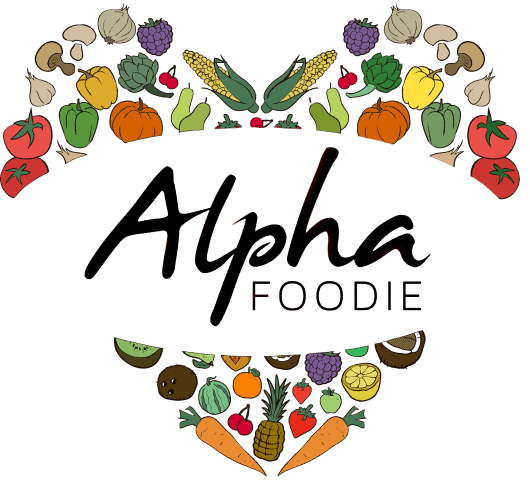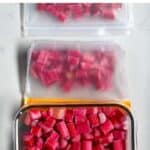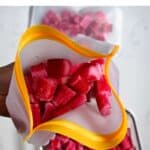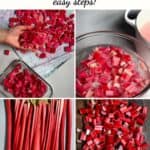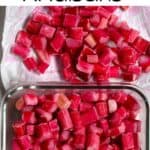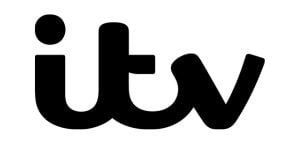This post may contain affiliate links. Please read our disclosure policy.
Get ready for rhubarb season with my go-to guide on picking, cooking, and freezing rhubarb. An easy tutorial with lots of tips.
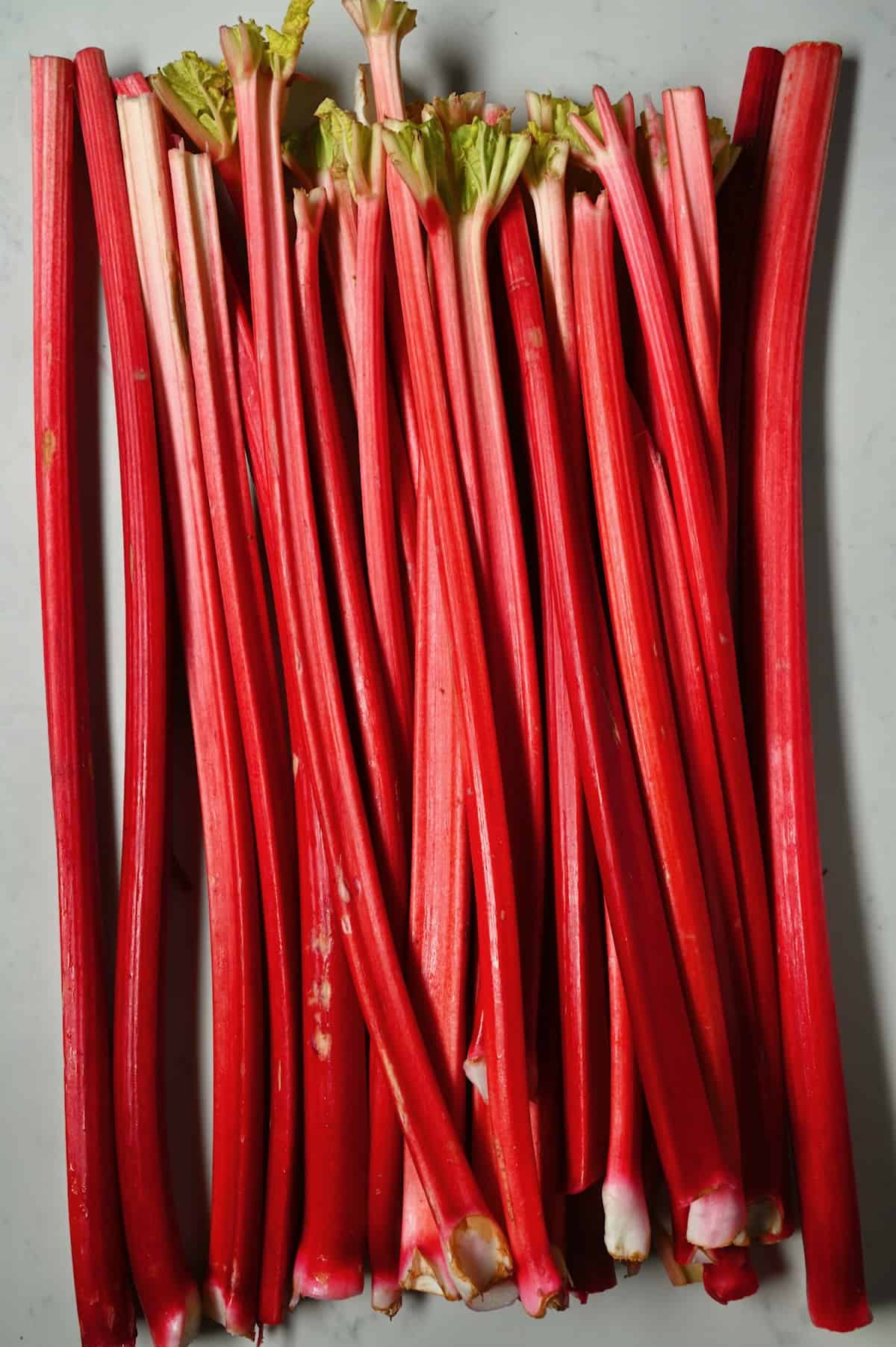
Spring brings a glut of seasonal fruits and vegetables, and I think there is none more aesthetically-pleasing than rhubarb. A strong plant, it’s a versatile vegetable that’s popular all over the world.
You can always find it in your local grocery store. But there’s nothing quite as satisfying as buying it at a farmer’s market or, indeed, growing it yourself in your garden. And even when it’s out of season, you can freeze rhubarb to have it throughout the year.
Want to save this recipe?
What Is Rhubarb
So, is rhubarb a fruit or vegetable?
Technically, it’s a vegetable because of the plant it’s cultivated from and the fact that its stalks are edible. However, many organizations – including the FDA – have classified it as a fruit. It can be used in sweet and savory dishes and has a number of varieties. Depending on where you live, the variety most readily available for freezing rhubarb will differ.
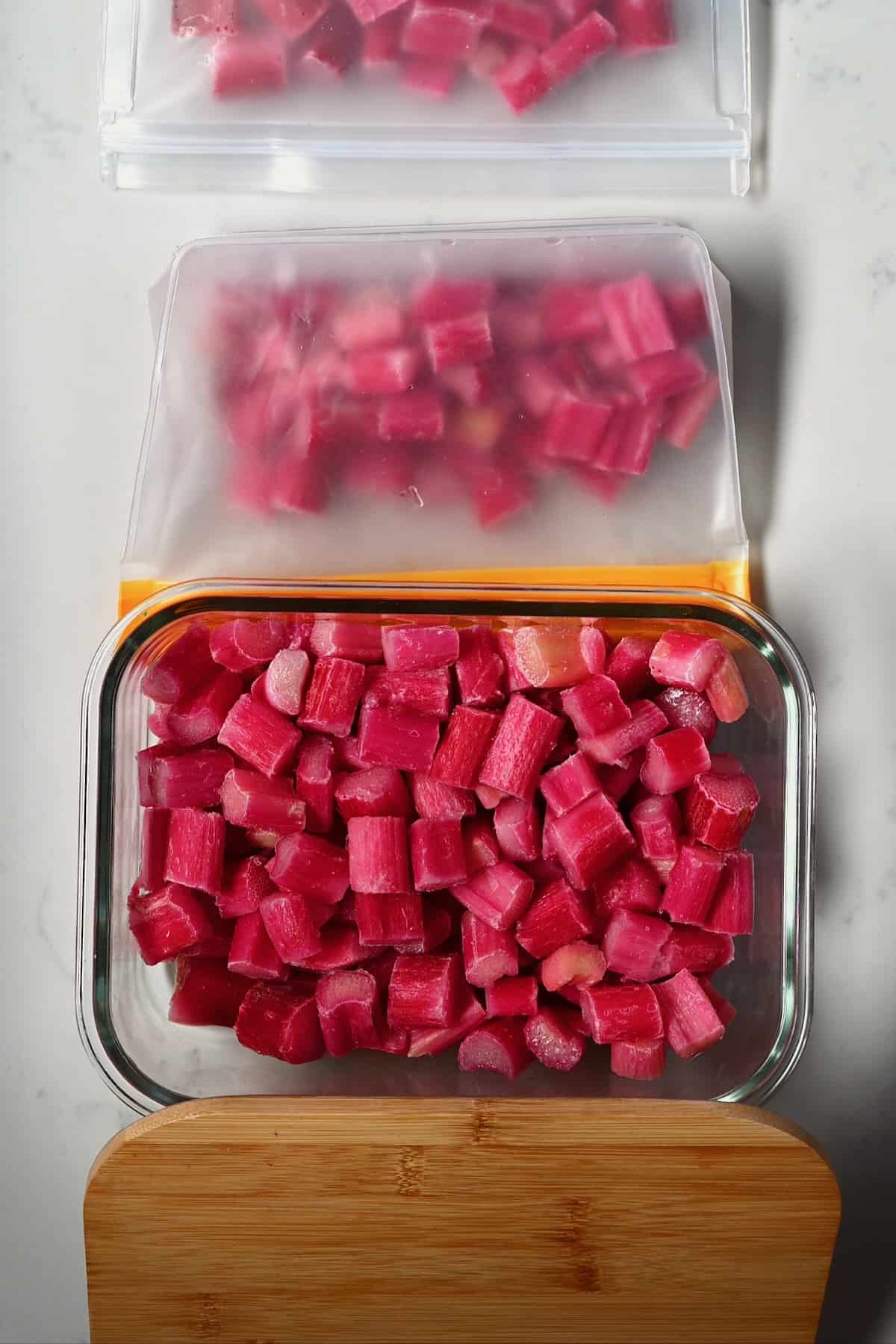
Rhubarb Benefits
It has many benefits for our health. Though not particularly nutritionally dense, rhubarb brings us high levels of antioxidants, Vitamin K and fiber, moderate amounts of Vitamin C, and is a naturally low-calorie food. Some limited studies have also shown it helps lower cholesterol, support bone health, reduce inflammation, and help with digestion. So it’s worth knowing the best methods for storing rhubarb once its season is over.
How to Cut and Freeze Rhubarb
There are two methods for freezing rhubarb – with and without blanching. Make sure you’ve removed all of the leaves before preparing to freeze rhubarb stalks.
How to Clean and Cut Rhubarb Stalks
Wash the stalks thoroughly with cold water, making sure to remove any dirt, and dry well with a towel. Remove any leaves and trim the ends of the stalks.
Then chop them into ½ to 1 inch pieces. If the stalks have tough strings, remove any before chopping the stalks.
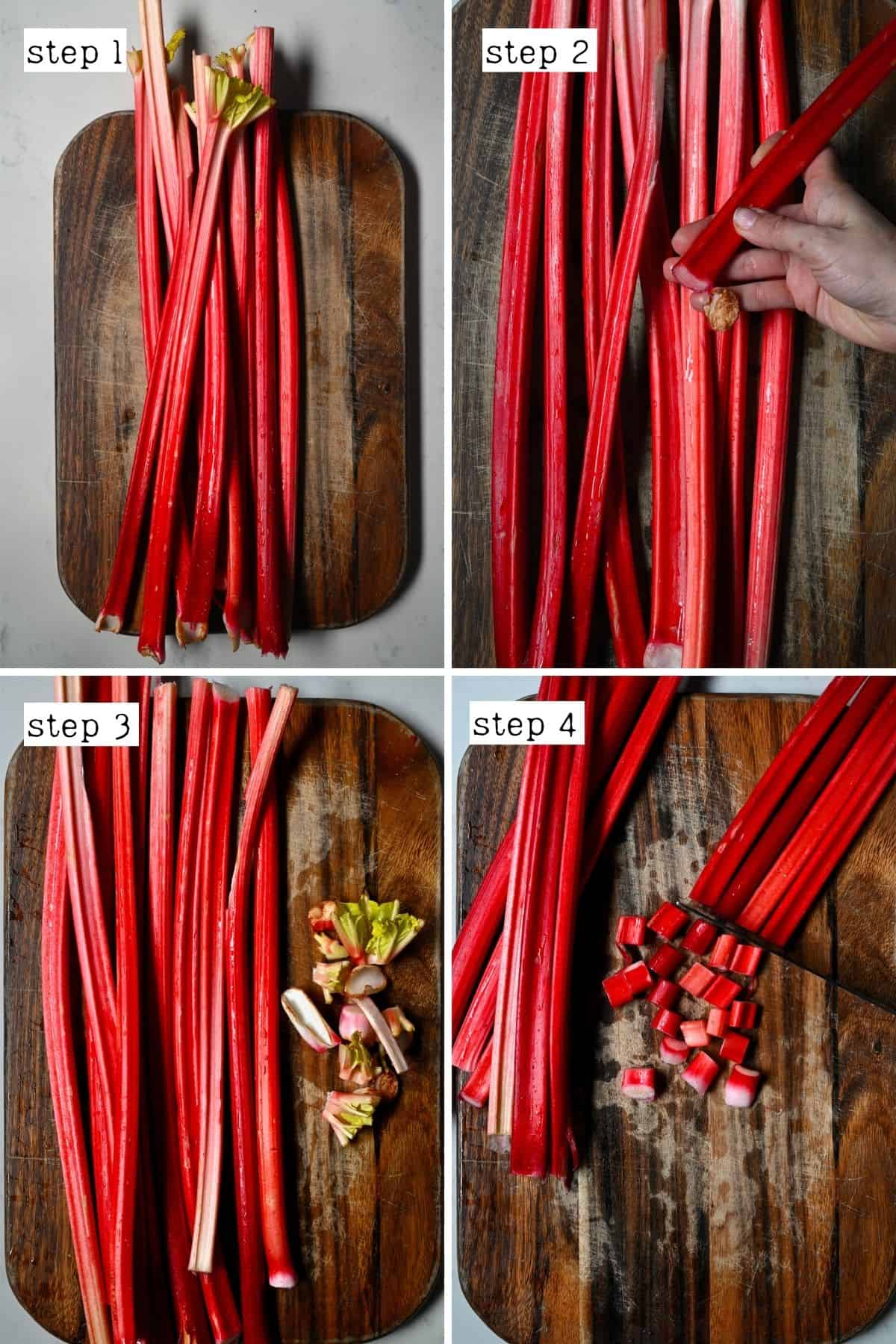
Do I Need to Blanch Rhubarb Before Freezing?
If you are using stalks that are crisp and firm (especially when working with fresh rhubarb from your garden), then it’s not necessary to blanch them. Just move on to the next step (freezing).
I recommend blanching if you’re working with tougher stalks that are grown out of the typical season.
To blanch, place the pieces into a pot with boiling water for one minute. Then, immediately place them into an ice bath (a bowl with iced water).
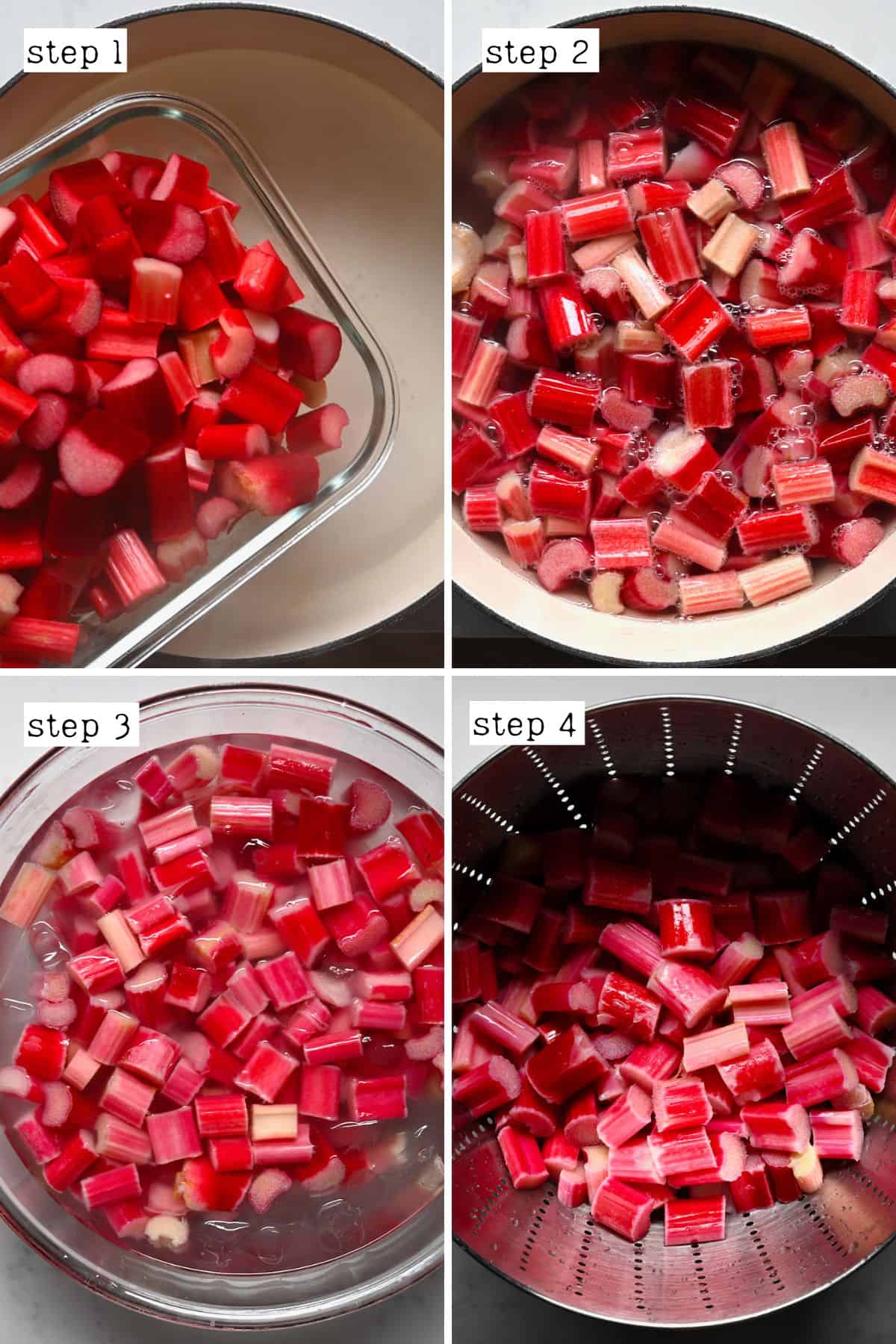
Drain and pat dry with paper towels or a towel.
For How Long Can You Freeze Rhubarb?
Spread your pieces in a single layer on a tray or baking sheet (I like to cover it with parchment paper). Then flash freeze for a few hours or overnight.
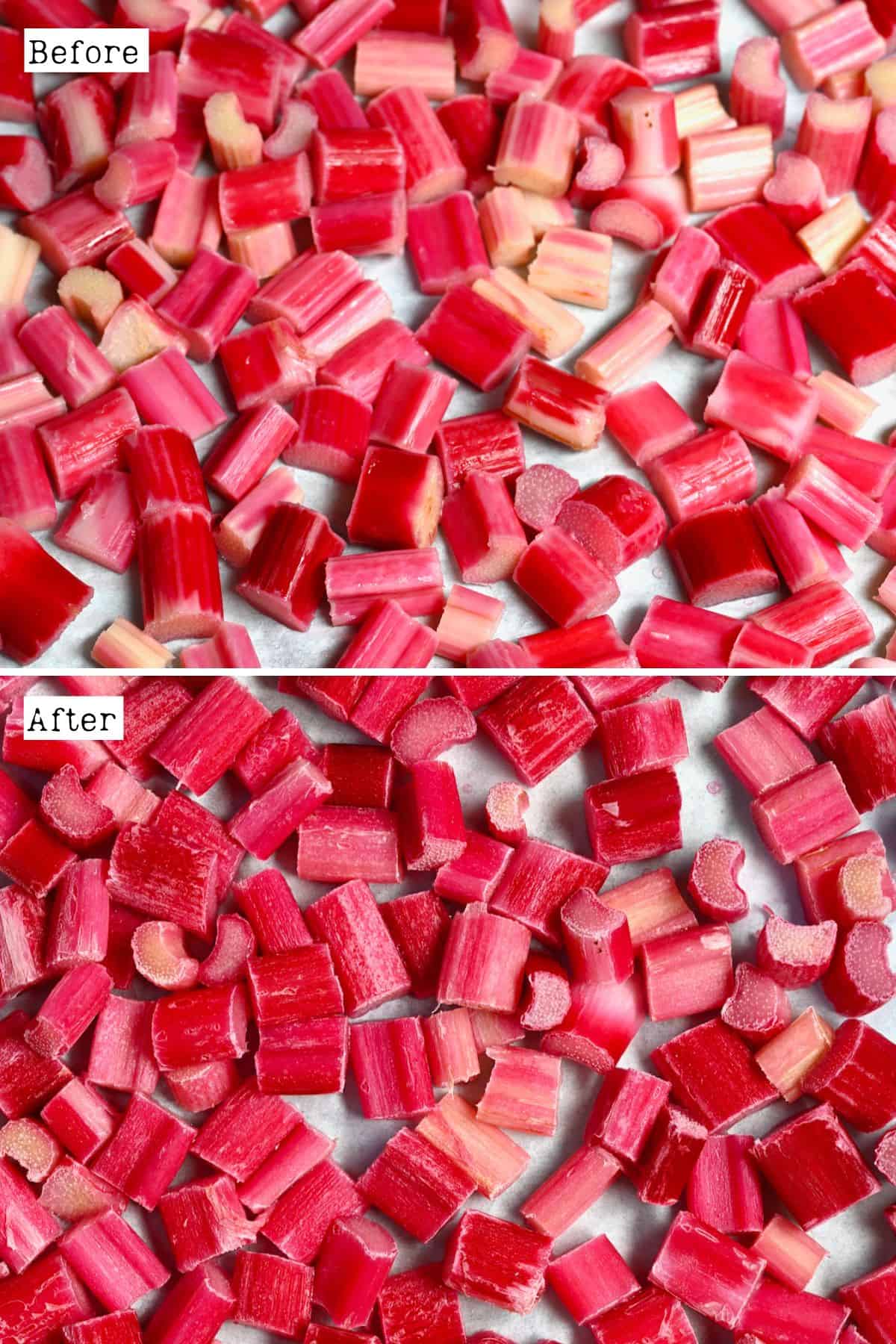
Next, move the pieces to a container or freezer bag, seal them tight removing as much air as possible, and label them with a date.
Frozen rhubarb will keep for up to a year. If kept for a long time, it might develop freezer burn/ice crystals – that’s a sign it’s past its prime.
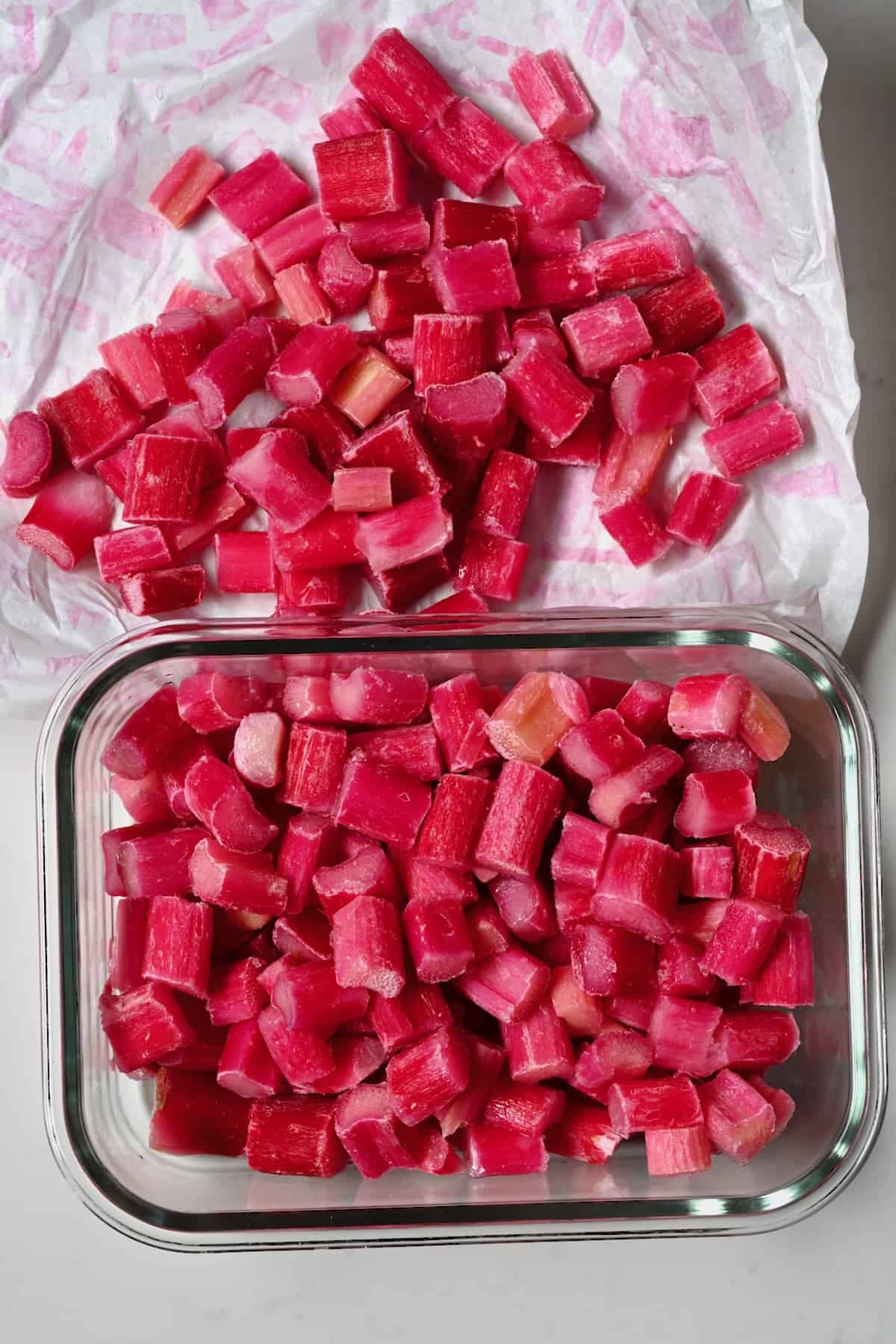
How to use Rhubarb in Recipes
It is a great addition to baked goods and cooked dishes. You will often find it in recipes like rhubarb crisp, in a cobbler, pie, or muffins.
You can also make homemade rhubarb jam or compote. These are other great ways to preserve rhubarb.
Plus it’s great in ice cream and you can make rhubarb sauce or cordial with it.
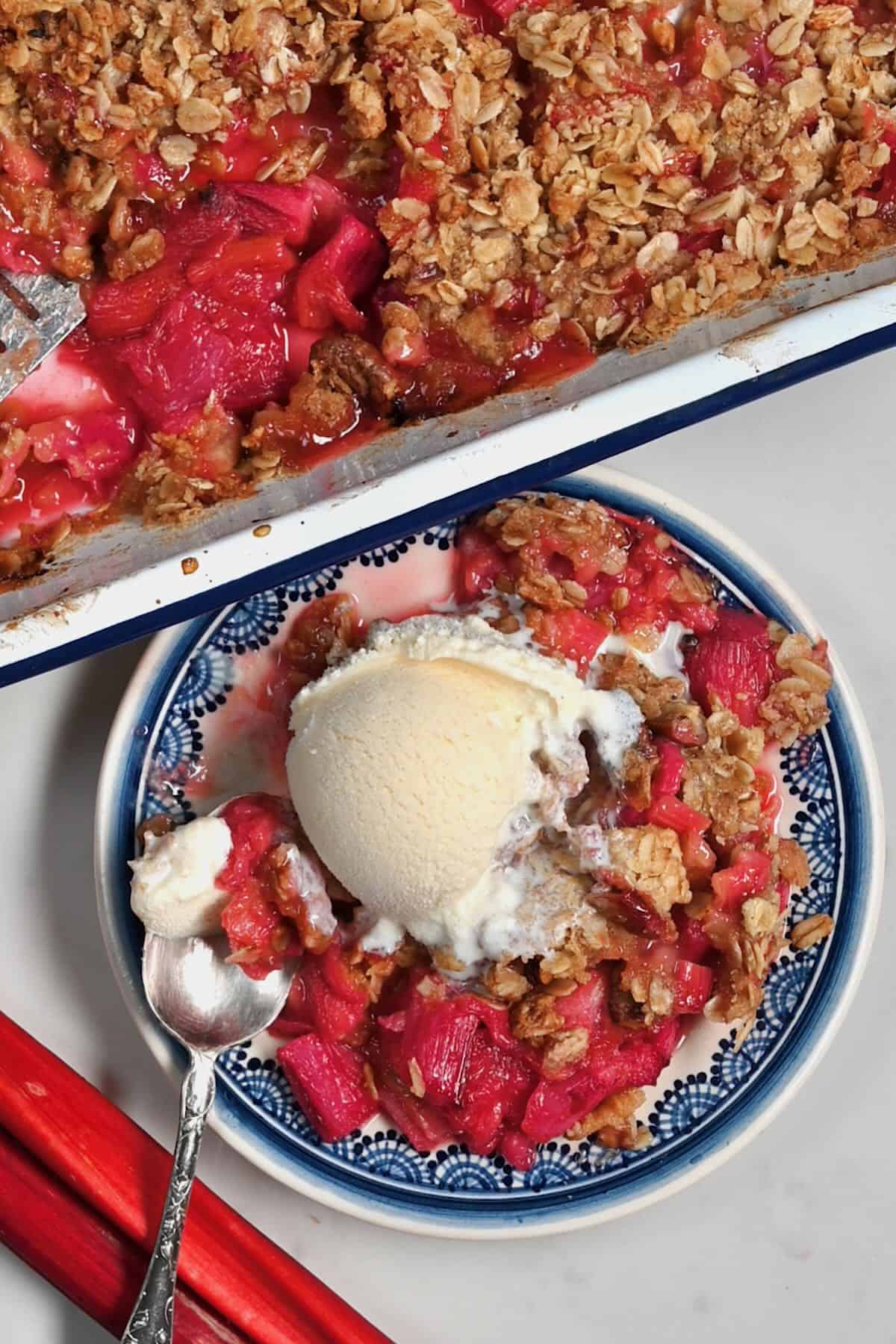
FAQs
Raw rhubarb has a particularly sour taste and is a little bitter – which is why it’s commonly cooked with sugar or lemon juice. When cooked, the taste becomes sweeter and milder and is well paired with strawberries and other fruit.
For the best taste, you’ll want to find it grown from April through to June-July. Not only will you get bigger stalks (meaning more rhubarb), but the flavor is sweeter when cooked.
The stalk is safe to eat, but the leaves are not. Rhubarb leaves contain a compound called Oxalic Acid, which is toxic to humans and should never be consumed.
When preparing rhubarb, you need to remove all of the leaves and just work with the stalks to avoid any potential cross-contamination.
While you can’t eat them, they have many uses away from the kitchen. You can compost them, make leaf-cast stepping stones or bird paths, make DIY fabric dies, use them as a weed barrier to cover garden soil and more.
More Ingredient Guides
- What to do with radishes
- Radish greens – what to do with them
- how to cook fava beans
- how to cook artichoke
- What to do with Romaine lettuce
- How to keep asparagus fresh in the refrigerator
If you try these tips for freezing rhubarb, let me know how it goes in the comments below. I’d appreciate a recipe card rating and would love to see your recipe recreations – tag me on Instagram @Alphafoodie!
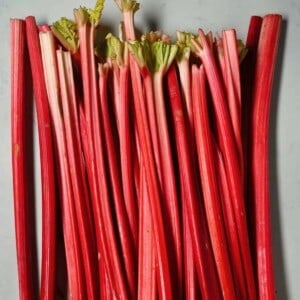
How to Freeze Rhubarb
Equipment
- Reusable freezer-safe bags or container
Ingredients
- 1 lb rhubarb or as much as wanted
Instructions
Clean and Chop
- Wash the stalks thoroughly with cold water, making sure to remove any dirt, and dry well with a towel. Remove any leaves and trim the ends of the stalks.
- Chop them into ½ to 1-inch pieces. If the stalks have tough strings, remove any before chopping the stalks.
Blanch – Optional
- I recommend blanching if you're working with tougher stalks. If you are using stalks that are crisp and firm (especially when working with fresh rhubarb from your garden), then it's not necessary to blanch them. Just move on to the next step (freezing).
- To blanch, place the pieces into a pot with boiling water for 1 minute. Then, immediately place them into an ice bath (a bowl with iced water).
- Drain and pat dry with paper towels or a towel.
Freeze
- Spread your pieces in a single layer on a tray or baking sheet (I like to cover it with parchment paper). Then flash freeze for a few hours or overnight.
- Move the pieces to a container or freezer bag, seal them tight removing as much air as possible, and label them with a date. Frozen rhubarb will keep for up to a year.
Video
Notes
Nutrition
Nutrition information is automatically calculated, so should only be used as an approximation.
